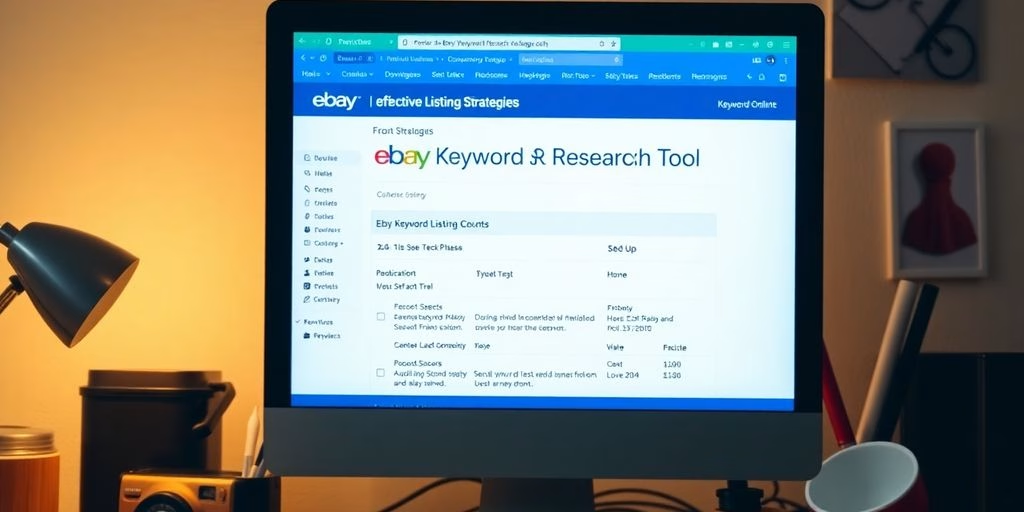Welcome to the world of SEO, where the little things can make a big difference! One of these ‘little things’ is the meta description – a brief snippet of text that appears under your website’s title in search engine results. While it might seem like a small detail, a well-crafted meta description is a secret weapon for attracting visitors to your site. Think of it as your website’s elevator pitch to potential visitors; it needs to be catchy, informative, and to the point.
For those of you who aren’t professional SEOs, fear not! Crafting a compelling meta description isn’t as daunting as it sounds. In this guide, we’ll walk you through everything you need to know about creating meta descriptions that not only resonate with your audience but also boost your site’s visibility in search results. So, let’s dive in and start making those search engines work for you!
Daftar Isi
BeralihHal-hal Penting yang Dapat Dipetik
- A well-crafted meta description can significantly enhance your website’s click-through rate and attract more visitors.
- Incorporating relevant keywords without overstuffing is crucial for creating an effective meta description.
- The ideal length of a meta description strikes a balance between being concise and providing enough information to entice the reader.
- Understanding and implementing HTML meta tags is essential for ensuring your meta description is properly displayed in search results.
- Learning from real-world examples and avoiding common pitfalls can help you refine your meta description strategy for better SEO performance.
The Anatomy of a Magnetic Meta Description

Key Ingredients for Success
Whipping up a meta description that’s both informative and enticing is akin to baking the perfect souffl\u00e9 \- it requires precision, flair, and a dash of creativity. Start with a clear statement or question that includes your kata kunci, setting the stage for what’s to come. Your meta description should be a coherent, engaging snippet that serves as an appetizer to the main course \- your webpage.
- Memasukkan high-impact keywords that align with your business and resonate with your audience.
- Present your unique selling proposition (USP) to differentiate your brand.
- End with a persuasive call-to-action (CTA) to encourage clicks and engagement.
The real art lies in balancing these elements to provide value and incite curiosity, leading to that all-important click.
Remember, a meta description is your chance to make a first impression in the digital wilderness. It’s not just about SEO tactics; it’s about crafting content that speaks Google’s language while serving up your brand’s unique flavor.
The Perfect Recipe for Relevance and Appeal
Crafting the ideal meta description is akin to preparing a gourmet dish; it requires a blend of creativity, precision, and an understanding of the audience’s palate. Start with a clear, engaging statement that captures the essence of your content. Sprinkle in your unique selling proposition (USP) and garnish with a call-to-action (CTA) that’s too tempting to resist.
The secret sauce? A dash of relevance and a pinch of appeal, mixed with the natural integration of keywords.
Remember, your meta description is the amuse-bouche of your content, offering a taste that should leave searchers craving more. Here’s a simple checklist to ensure you’re on the right track:
- Use active voice and compelling verbs
- Include a benefit or solution
- Inject your brand’s personality
- Keep it under 160 characters
By following these steps, you’ll create a meta description that not only ranks well but also resonates with your audience, driving clicks and conversions.
Serving Up Your Brand’s Voice
In the bustling digital marketplace, your brand’s voice is the secret sauce that can set you apart from the competition. Crafting a meta description that resonates with your brand’s unique tone can be the difference between a user clicking through or scrolling past. It’s not just about what you say, but how you say it.
Voice search optimization is becoming a staple in SEO strategies. With the rise of digital assistants, your meta description should cater to conversational queries while still maintaining your brand’s character. Here’s how to infuse your brand’s voice into your meta descriptions:
- Use language that reflects your brand’s personality.
- Highlight your unique selling propositions (USPs).
- Include a clear call to action (CTA).
Remember, your meta description is an invitation to your website – make it sound like one you can’t refuse.
By balancing the technical aspects of SEO with the creative flair of your brand’s voice, you can create meta descriptions that not only rank well but also captivate your audience.
The Pitfalls of Meta Description Missteps

Keyword Gluttony: Less is More
In the quest for SEO dominance, it’s tempting to feast on keywords, stuffing them into your meta descriptions like a turkey on Thanksgiving. But beware, this practice, known as isian kata kunci, is the digital equivalent of a fad diet: it might offer short-term gains, but it’s unsustainable and potentially harmful in the long run. Search engines have evolved to prioritize content that is natural and user-focused, not pages bloated with keywords.
- Avoid repetition: Don’t repeat keywords unnecessarily; it’s unappetizing to readers and search engines alike.
- Synonyms are your friends: Use related terms to keep your content fresh and engaging.
- Context is key: Ensure keywords fit naturally within the sentence structure.
Remember, a meta description should be a savory snippet of what’s to come, not a keyword buffet. It’s about balance and taste, not just volume.
The Perils of Being Too Mysterious or Vague
In the quest to intrigue and entice, some meta descriptions end up more enigmatic than a Sphinx’s riddle. Avoid being too vague; your meta description is a handshake, not a guessing game. It should offer a clear snapshot of what’s on the page, not a foggy teaser that leaves searchers scratching their heads.
- Overstuffing Keywords can repel both readers and search engines.
- Being too vague, like using phrases such as “Click here to learn more,” fails to hook the reader with specific benefits.
Crafting a meta description that balances curiosity with clarity is an art form. It requires creativity, clarity, and a touch of marketing flair. Don’t be afraid to experiment with different styles and phrasings.
Remember, a meta description that’s too cryptic can be just as harmful as one that’s overstuffed with keywords. It’s about finding that sweet spot where relevance meets curiosity, guiding users right to your digital doorstep.
Avoiding the ‘Copy and Paste’ Temptation
In the quest for SEO dominance, it’s tempting to take shortcuts. But when it comes to meta descriptions, originality is your ally. Each page on your website is unique, so its meta description should be too. Here’s why:
- Konten duplikat dilutes your SEO efforts. Search engines might struggle to determine which page to prioritize, leading to a weaker overall presence.
- Unique meta descriptions cater to the specific content of each page, enhancing relevance and user experience.
- Crafting distinct meta descriptions is an opportunity to flex your creative muscles and infuse your brand’s personality.
Imagine you’re concocting a signature dish; you wouldn’t just reheat yesterday’s leftovers. Similarly, avoid reheating meta descriptions. Instead, savor the process of creating fresh, zesty snippets that capture the essence of each page. Remember, a meta description is like a movie trailer for your content—make it intriguing, but don’t give away the plot.
Crafting a unique meta description is akin to preparing a gourmet meal for your website’s visitors—every ingredient must be chosen with care to create a memorable experience.
The Perfect Length of Meta Description

Too Short? Too Long? Just Right!
Finding the Goldilocks zone for your meta description length can feel like a fairy tale quest. But fear not, for the magic number lies between 150-160 characters. This range is not arbitrary; it’s the sweet spot where your message is fully visible in search results, avoiding the dreaded ‘read more’ cutoff.
Remember, the meta description is your elevator pitch to the world wide web. It’s a brief yet powerful opportunity to showcase the essence of your page. Here’s how to make every character count:
- Start with a compelling hook that captures attention.
- Include a clear value proposition that spells out the benefits.
- Sprinkle in your primary keyword, but keep it natural.
- End with a call-to-action that’s too tempting to ignore.
Crafting a meta description is like tweeting with SEO in mind: you have limited space to make a big impact. Use it wisely!
By adhering to these guidelines, you’ll ensure that your meta description isn’t just the right length, but also the right message to engage and convert your audience.
The Art of Being Concise Yet Comprehensive
Striking the perfect balance in your meta description is akin to a tightrope walk above the digital abyss. Every word must earn its place on the wire, contributing to a cohesive narrative that entices the reader to click. Imagine you’re distilling the essence of your page into a potent elixir, one that captures the imagination and delivers the promise of value.
- Start with a punchy opening that hooks attention.
- Weave in your unique selling proposition (USP).
- End with a call-to-action (CTA) that’s too tempting to resist.
Remember, the meta description should be a concise summary of your page’s content. It’s your chance to let search engines and potential visitors know what to expect from your page. So, make every word count!
By adhering to this formula, you’ll craft meta descriptions that are not just brief, but brimming with relevance. They’ll serve as a beacon, guiding users through the vast sea of search results to the safe harbor of your content.
Testing and Tweaking for the Sweet Spot
Finding the Goldilocks zone for your meta description length is a bit like baking the perfect cookie: it requires precision, patience, and a willingness to experiment. Start with the standard SEO advice of 155-160 characters, but don’t be afraid to test the waters with slightly longer or shorter versions. Remember, the goal is to be as succinct as possible while still conveying the full flavor of your content.
- Conduct A/B testing to compare different lengths
- Analyze user engagement metrics such as click-through rates
- Adjust based on feedback and search engine performance
The sweet spot for your meta description is where clarity meets brevity. It’s the point at which your message is fully understood without a single wasted character.
Regularly revisiting and refining your meta descriptions is a strategic SEO tactic for long-term success. By crafting SEO-friendly content with relevant keywords, you deliver value to readers and optimize the user experience. Keep a close eye on analytics to track progress and identify opportunities for improvement. And remember, konten berkualitas that resonates with both users and search engines is the cornerstone of SEO success.
Behind the Scenes: Crafting Your Meta Masterpiece in HTML

The Nuts and Bolts of Meta Tags
Welcome to the toolbox of SEO, where the humble meta tag is the unsung hero. These snippets of HTML code might not win any beauty contests, but they’re pivotal in the grand pageant of search engine results. Membuat meta description is akin to writing a miniature ad for your webpage. It’s your chance to flaunt your content’s value in under 160 characters and convince users to click through.
Meta tags are not just about being seen; they’re about being seen and understood. Here’s a quick rundown of what to include:
- A title tag that’s both informative and enticing, without crossing into the realm of clickbait.
- A meta description that summarizes your content with enough pizzazz to spark curiosity.
- Keyword inclusion that’s natural and not forced, avoiding the dreaded ‘keyword stuffing’.
Remember, your meta description is your storefront window display in the digital mall of the internet. Dress it to impress!
By adhering to these guidelines, you’ll be well on your way to creating meta tags that not only catch the eye of search engines but also captivate potential visitors.
Where to Weave Your Meta Magic in the Code
Once you’ve conjured up the perfect meta description, it’s time to embed it into the fabric of your webpage. The <head> section of your HTML is the stage where your meta description performs its SEO magic. Here, nestled among the title and link tags, your meta description will sit, ready to charm both search engines and potential visitors.
To ensure your meta spell works, follow these simple steps:
- Access your website’s HTML through a CMS like WordPress, or get hands-on by editing the HTML file directly.
- Locate the <head> section, which is typically at the top of the HTML file.
- Insert the
<meta name="description" content="...">tag if it’s not already present. - Within the
content=""attribute, let your meta description shine.
Remember, the meta description is a sneak peek into the content of your page. It should be enticing, informative, and reflective of your brand’s voice. Crafting this snippet with care can lead to a significant uptick in click-through rates from the SERPs.
Best Practices for HTML Meta Description Integration
When it comes to weaving the web of your meta magic, the devil is in the details. Ensure each page has its own unique meta description to avoid the SEO faux pas of duplicate content. Here’s how to charm the search engines and your audience with best practices:
- Access Your Website’s HTML: Whether through a CMS or directly, this is where your journey begins.
- Locate the <head> Section: This is your treasure map’s ‘X’ that marks the spot.
- Craft Your Meta Description: Insert the
<meta name="description" content="...">tag and let your creativity flow within thecontent=""atribut.
Remember, your meta description is your website’s handshake with potential visitors. Make it firm, friendly, and memorable. And just like a handshake, it should be neither limp nor bone-crushing; aim for that perfect pressure that says, ‘Pleased to meet you!’
Your meta description is not just a technical tick-box; it’s the sizzle that sells the steak of your webpage.
Meta Descriptions in the Wild: Real-World Examples

Learning from the Leaders: What Works and Why
When it comes to meta descriptions, imitation is the sincerest form of flattery—and often the smartest strategy. By analyzing the meta descriptions of SEO juggernauts, we can distill the essence of what makes them tick. These leaders understand that a meta description is a brand’s handshake with the searcher, a promise of the value within. They craft messages that are not just informative, but also engaging and reflective of their brand’s personality.
- Idealista knows the power of clarity and relevance, offering crisp, concise descriptions that match searcher intent.
- Lonely Planet entices with the allure of adventure, using vivid language to transport readers.
- The World Wildlife Fund (WWF) combines passion with purpose, striking an emotional chord while informing.
- Reddit capitalizes on community and curiosity, often posing a question or highlighting a discussion.
- Wired showcases its cutting-edge insight with descriptions that hint at the depth of content awaiting the reader.
The key is to balance keyword inclusion with persuasive language that compels the click without overpromising. Crafting a meta description is like writing a tweet; you have mere seconds to capture attention, so make every word count.
Innovative Approaches to Stand Out in the SERPs
In the ever-evolving game of SEO, standing out in the SERPs can feel like trying to solve a Rubik’s Cube blindfolded. But fear not, for innovation is your secret weapon. To truly shine, consider these creative strategies:
- Unveil the magic dari alat penelitian kata kunci by understanding search intent. Master advanced keyword tactics to connect with your audience and stay ahead in the SEO game.
- Embrace the power of storytelling. Weave a narrative around your brand that captivates and compels clicks.
- Experiment with rich snippets and structured data to enhance visibility and click-through rates.
Remember, the goal is not just to appear in the SERPs, but to resonate with the searcher. It’s about creating a meta description so enticing that it’s virtually impossible to scroll past.
While the majority of clicks are hoarded by the top results, don’t be discouraged. Use the art of search intent to decode audience needs and climb the ranks. Keep testing, keep tweaking, and watch as your meta descriptions become irresistible invitations to your website.
Dive into the essence of effective online marketing with our curated selection of ‘Meta Descriptions in the Wild: Real-World Examples’. Uncover the secrets behind compelling meta descriptions that captivate and convert. Don’t miss out on the opportunity to enhance your digital presence.Hubungi kami sekarang for invaluable insights and let’s achieve remarkable success together!
Conclusion: The Meta Magic for SEO Success
And there you have it, digital wizards! You’re now armed with the sorcery of meta description mastery, ready to enchant the SERPs and captivate potential visitors. Remember, this tiny snippet of text is your website’s handshake, its sly wink across the crowded room of search results. It’s where your SEO efforts meet your audience’s curiosity, sparking the click that could lead to a lasting engagement.
So wield your newfound knowledge with a blend of creativity, precision, and a sprinkle of SEO magic. Experiment, iterate, and watch as your click-through rates soar and your site’s presence bewitches the web. Now go forth and conjure up those irresistible meta descriptions that even search engines can’t ignore!
Pertanyaan Umum
What are the key elements of a compelling meta description?
Crafting a compelling meta description involves including relevant keywords, being informative and engaging, and providing a clear summary of the page’s content. It should serve as your website’s elevator pitch to entice potential visitors.
How can I avoid common mistakes when writing meta descriptions?
To avoid common mistakes, steer clear of keyword stuffing, being too vague or mysterious, and copying and pasting generic descriptions. Instead, focus on creating unique, relevant, and concise descriptions for each page.
Why are meta descriptions important for SEO?
Meta descriptions are important because they can influence click-through rates by providing a snapshot of what the page offers. While they don’t directly affect rankings, they encourage user engagement, which is a key factor in SEO success.
What is the ideal length for a meta description?
The ideal length for a meta description is typically between 150-160 characters. It should be long enough to be descriptive but short enough to avoid being cut off in search engine results pages.
How do I craft a meta description in HTML?
To craft a meta description in HTML, you need to add atag in the section of your webpage’s HTML code. Ensure it contains the ‘name’ attribute set to ‘description’ and the ‘content’ attribute filled with your meta description text.
Can I experiment with different styles when writing meta descriptions?
Yes, experimenting with different styles and phrasings is encouraged. Sometimes, breaking the conventional mold with creativity and marketing flair can lead to more effective meta descriptions that resonate with your audience.









































































































